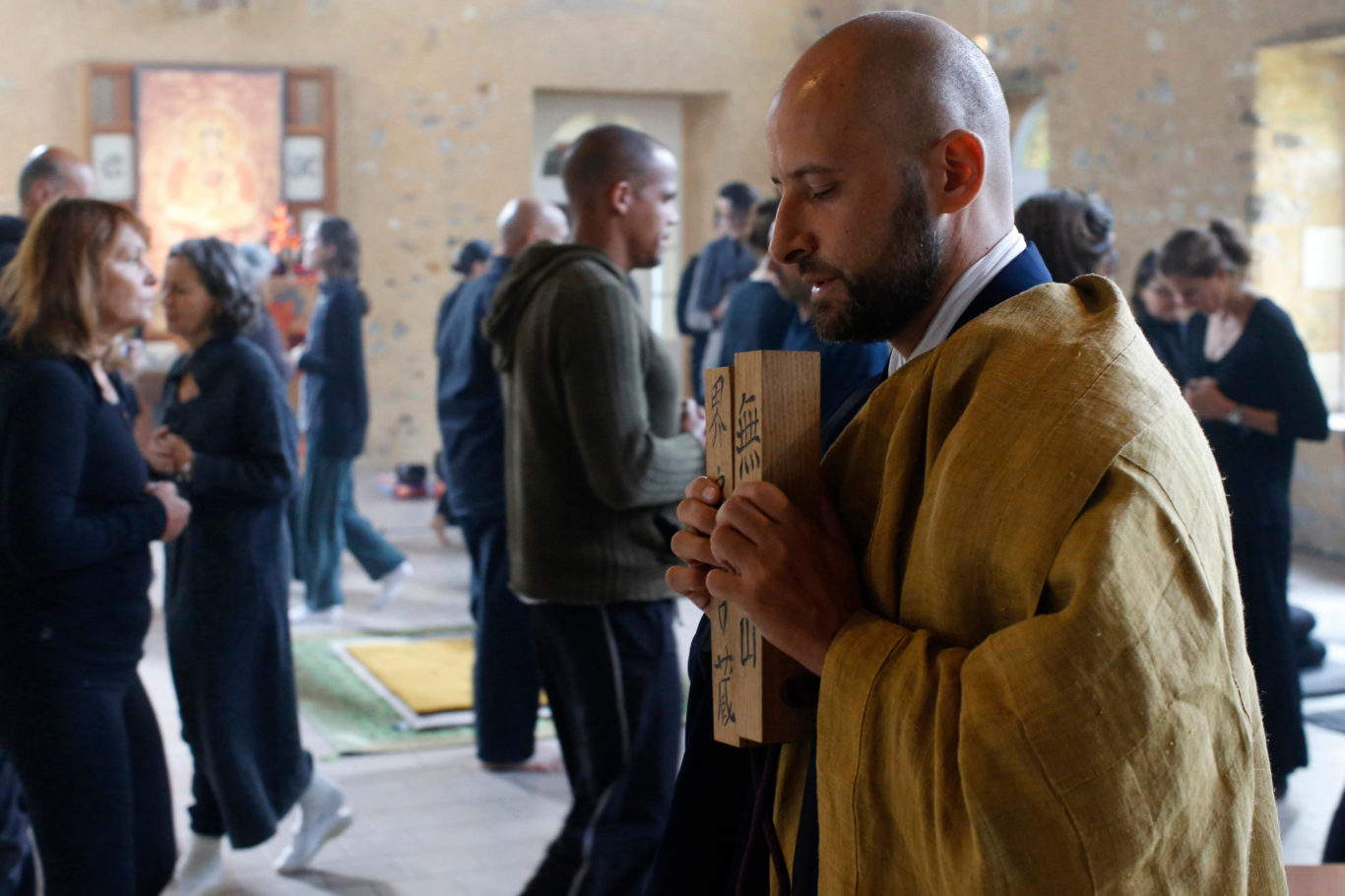Walking meditation

Zen practitioners conduct kinhin (walking meditation) during a retreat in France. | Godong / Alamy Stock Photo
The practice of paying close attention to the process of walking, sometimes referred to as “meditation in motion,” can be a welcome addition to sitting practice. During walking meditation, we train ourselves to remain present and mindful even while moving, which is usually when we’re keen on getting things done. As with all forms of meditation, maintaining awareness is key.
Variations of walking meditation are taught in many schools of Buddhism: walking is a core practice in Theravada, modern mindfulness, and Zen, for example. We can walk alone or in file with a group, in a circle or straight, and with varying speed. A common form of walking meditation zooms in on the legs and feet—sensations of contact, lifting, muscular activity, pressure, and so on—as we mindfully move forward. We might take stock of the body when standing still, then walk slowly and attentively in a straight line for some steps, stop, turn, stop, and walk back.
It may feel awkward at first, but once walking meditation has become a natural practice, it can be applied in a less formal way to the comings and goings of everyday life (although you may want to pick up the pace!). When we’re present and mindful in motion, we can use the synergy of body, mind, and environment to foster a grateful awareness of interconnectedness with other beings and the earth. And the Buddha himself listed additional benefits: increased endurance when traveling or exerting oneself, better disease resistance, improved digestion, and long-lasting concentration.

Tricycle is more than a magazine
Gain access to the best in sprititual film, our growing collection of e-books, and monthly talks, plus our 25-year archive
Subscribe now